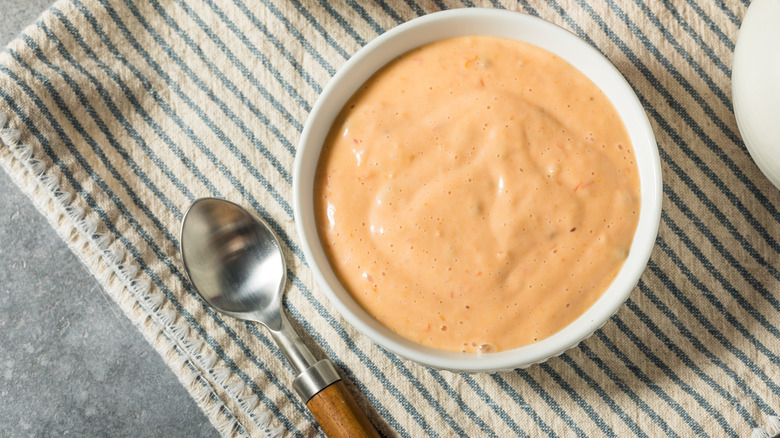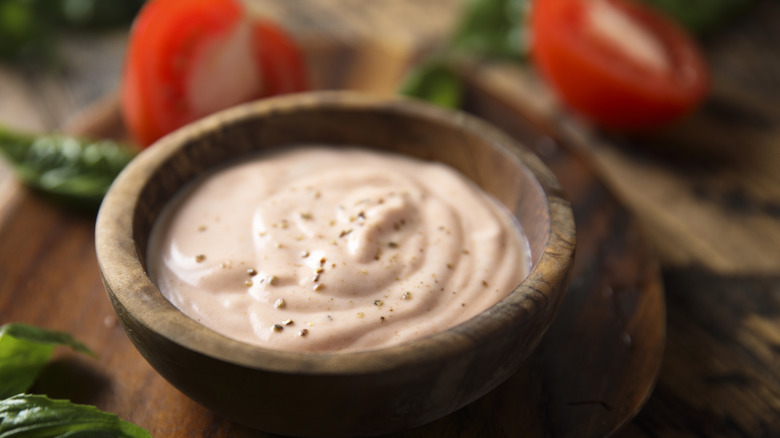Thousand Island Vs Russian Dressing: What's The Difference?
There's a theory that In-N-Out's famous sauce is just Thousand Island dressing, and even the most dedicated fans of the chain admit that this one gives them pause. Naysayers argue that this can't be the case at all, because the beloved fast food chain's sauce is spicier than the typical version of the dressing. But, that might make it similar to Russian dressing — the biggest differences between Thousand Island and Russian dressing is the flavor profile. While Thousand Island dressing has a sweetness to it, Russian dressing is generally spicier.
If you order one or the other at a restaurant based on the expectation of sweet versus spicy, though, you might be surprised. Russian dressing hasn't had the continued popularity of its close cousin, and many places that need to make a creamy dressing might make it spicy and call it Thousand Island anyways, just to keep things simple.
In any case, both are made with the same mayo and ketchup base, and there's one ingredient that's often listed as both a similarity and a difference: Pickle relish. While some sources claim that both dressings receive a kick from this ingredient, others say that it's only used in Thousand Island dressing. Russian dressing, on the other hand, gets a spicy boost from horseradish, chile peppers, and chile sauce, but there's a little more to it than that.
The difference between Thousand Island and Russian dressing is blurry
One of the few things that many sources seem to agree on is that Thousand Island dressing is made chunkier with the addition of hard boiled eggs. Russian dressing, on the other hand, doesn't include eggs. Worcestershire sauce is often cited as an ingredient in both, and there are plenty of recipes for Thousand Island that include a spicy hot sauce, horseradish, or mustard powder (even though some insist that these are Russian dressing–only ingredients).
The pickle relish is often described as the thing that defines Thousand Island. There's a bit of a problem: The Washington Post cites the "Oxford Encyclopedia of Food and Drink in America" as saying that Russian dressing was invented in New Jersey, and while it's not clear where the name came from, some believe it's a reference to a Russian fondness for pickle relish. That was — and you guessed it — one of the dressing's main ingredients.
There's also debate about the idea that Russian dressing originally included caviar, and there are 1950s-era recipes for Russian dressing that include ground lobster shell. The bottom line is, whether you're making a pastrami burger or a upgrading a tuna salad, either will work.

